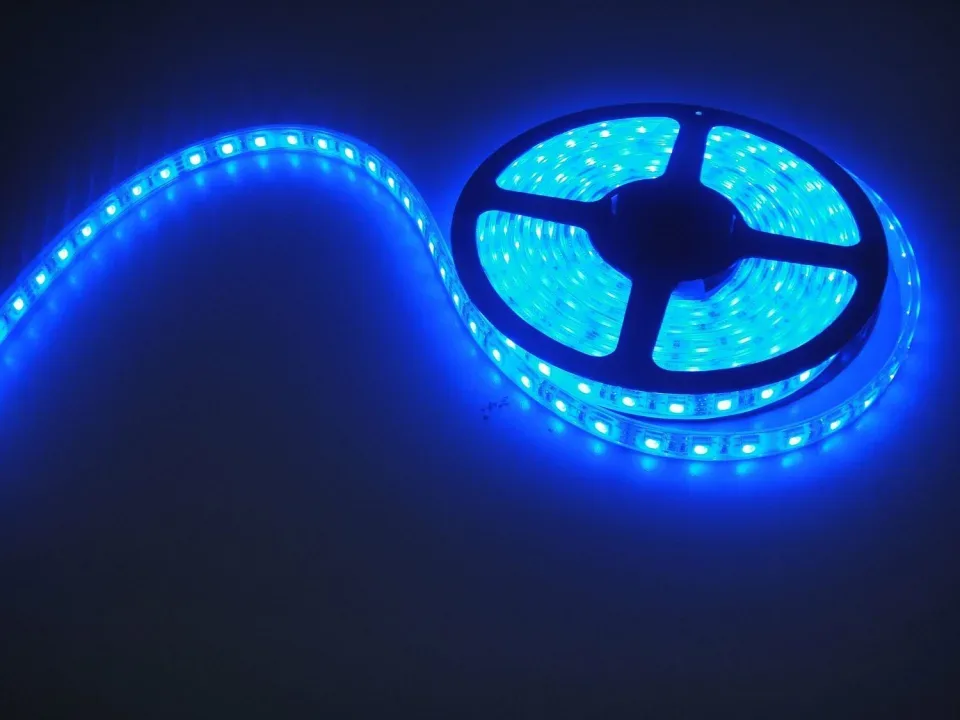LED light strips are versatile, energy-efficient, and an innovative solution for lighting design in various settings. From colorful under-cabinet lighting to mood-setting room decorations, they are easy to install and operate, offering numerous possibilities for your home, office, or event.
Table of Contents
What are LED Light Strips?
LED light strips are long, flexible circuits populated with light-emitting diodes (LEDs). They come in a variety of colors, brightness levels, and lengths, and can often be cut or linked together to suit any size requirement.
LEDs are solid-state devices that produce light through a process called electroluminescence. This technology is highly efficient, converting a higher percentage of energy into light compared to traditional incandescent bulbs, resulting in less wasted heat and lower energy costs.
Types of LED Light Strips
Single Color LED Strips
Single color strips emit one color and are typically available in warm white, cool white, red, blue, and green. They are perfect for accent lighting in rooms, staircases, or display cases.
RGB LED Strips
RGB stands for Red, Green, and Blue. RGB strips can produce any color by mixing these three primary colors, controlled by a remote or smartphone app. They are often used in home theaters, gaming setups, and mood lighting.
RGBW LED Strips
RGBW strips include an extra white chip along with RGB, which allows for a broader color palette and better white tones. This type is suitable for locations where nuanced color mixing or higher-quality white light is required.
Benefits of LED Light Strips
- Versatility: The flexible design allows them to be installed almost anywhere, and they are adaptable to various lighting requirements.
- Energy Efficiency: LEDs use less power compared to traditional lighting, which leads to energy savings over time.
- Longevity: LED lights can last up to 50,000 hours, considerably longer than incandescent or fluorescent bulbs.
- Safety: LEDs emit less heat, reducing the risk of fires. Plus, many LED strip lights operate at low voltage, adding an extra layer of safety.
- Color Variety: Especially with RGB or RGBW strips, you can create any color or effect you desire.
How to Install LED Light Strips
LED strips usually come with an adhesive backing, making installation a breeze. Follow these steps to install your LED light strip:
- Plan Your Layout: Decide where you want to install the strip and measure the length you need. Most LED strips can be cut at specific intervals, typically every 2-5 centimeters.
- Prepare the Surface: The surface should be clean and dry. Use a cloth to remove dust or grease.
- Apply the LED Strip: Peel off the adhesive backing and carefully stick the strip to the surface. Make sure to avoid twisting or stretching.
- Connect to Power: Connect the LED strip to a power supply or control unit, following the manufacturer’s instructions.
Remember to consider the LED strip’s IP rating (indicating the level of protection against dust and water) when choosing the right product for your needs. IP20 is suitable for indoor use, while IP65 or higher is necessary for outdoor installations.
Conclusion
LED light strips are a great addition to any home or workspace. With their simplicity, versatility, and cost-effectiveness, they have gained popularity among homeowners, interior designers, and event planners. Always consider the quality, IP rating, and control options before purchasing to ensure the product meets your specific needs. Happy decorating!


